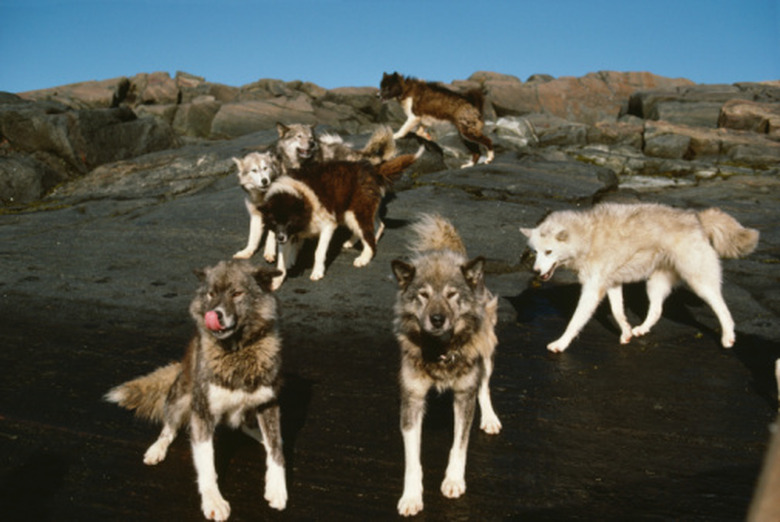What Limits Exponential Growth Of A Population?
In an ideal environment with unlimited resources, population growth would be exponential, as each reproduction cycle produces a larger pool of candidates for the next cycle. In nature, however, there are always limiting factors that cause the growth to level off. These factors are weak when the population is low and become stronger as the population increases, making the population tend toward a stable equilibrium, known as the carrying capacity.
Disease
Disease
As the population of a species in an environment increases, communicable diseases become a powerful limiting factor. A thinly distributed population will not transmit disease to as high a percentage of the population as a dense population. Once population density exceeds a certain point, highly communicable and lethal viruses affect a high enough percentage of the population to curtail population growth.
Food Scarcity
Food Scarcity
The supply of resources, especially food, is a near universal limiting factor of population growth. Every ecosystem has a specific amount of resources that can only sustain population levels of a species to a certain point. Competition and starvation limit the growth of the population beyond this point.
Predation
Predation
Every environment also comes with a variety of predators that limit the growth of a population. As a species' population grows exponentially, predators who previously preyed upon other species may begin preying on the more abundant species as a survival strategy. Additionally, overpopulation may result in crowding of an environment, pushing the species outside of its natural habitat into areas where it is more susceptible to predation.
Environmental Factors
Environmental Factors
Environmental factors such as pollutants and climate extremes also act to limit a population's growth. As a population grows, it expands its range of habitation to avoid overcrowding. This expansion may incur upon areas that have been heavily polluted by humans or deforested by lumber companies, leaving them vulnerable to disease and predation. As the population expands to other environments, it also may encounter less suitable habitats, causing extremes of hot and cold weather to be more lethal than in ideal habitats.
Cite This Article
MLA
Wallulis, Karl. "What Limits Exponential Growth Of A Population?" sciencing.com, https://www.sciencing.com/limits-exponential-growth-population-8168754/. 24 April 2017.
APA
Wallulis, Karl. (2017, April 24). What Limits Exponential Growth Of A Population?. sciencing.com. Retrieved from https://www.sciencing.com/limits-exponential-growth-population-8168754/
Chicago
Wallulis, Karl. What Limits Exponential Growth Of A Population? last modified March 24, 2022. https://www.sciencing.com/limits-exponential-growth-population-8168754/
